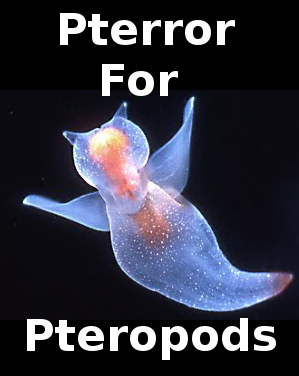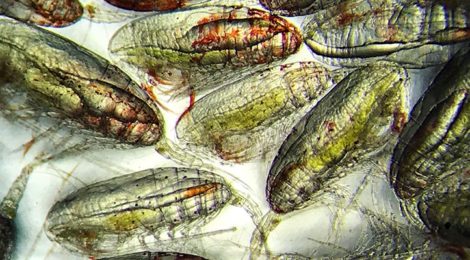
Ocean Carbon Zooplankton Pump Incredibly More Potent Than Previously Reported
Ocean Pastures Are Tended By Tiny Zooplankton Farmers
Every night these tiny creatures are in the surface pastures tending and feeding their plankton blooms
By the time the sun rises they are hundreds of meters below, in the dark digesting and sending a vast amount of the days harvested carbon into the dark abyss as ‘plankton pies’
Tens of billions of tonnes of CO2 is pooped into millennial storage in the deep ocean, or used to be, prior to the global cataclysmic collapse of our ocean pastures
Three new studies of the ocean carbon biological pump — the process by which carbon dioxide captured by phytoplankton in the surface ocean is transferred to the seafloor and safely stored for millennia — Associate Professor of Oceanography Mike Stukel and his collaborators found that microscopic zooplankton play critical, often underappreciated roles in the transport and sequestration of carbon.
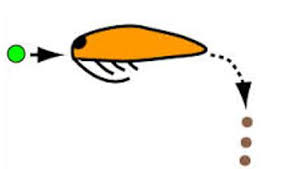
The Fecal Pellet Express is Nature’s most powerful tool to maintain this blue planet it the comfortable Goldilock’s Zone.
The mechanism spoken of, with a smile in ocean science, is the ‘fecal pellet express.’ It’s known that ocean life has evolved poop that always sinks. It is that sinking carbon-rich poop that is one key to the most potent of Nature’s climate controls. Of all the animal life on this blue planet, the zooplankton are the most abundant. But they are in a desperate state of collapse, albeit readily restored to historic health and abundance if we choose to do so.
Research provides new insight into the critical roles of plankton in ocean carbon storage
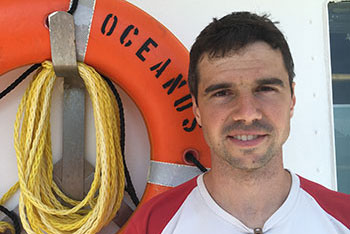
Professor Michael Stukel , Florida State University
Michael Stukel, assistant professor of Earth, Ocean and Atmospheric Science reports that the oceans are this Blue Planet’s most formidable ‘greenhouse gas’ carbon dioxide management and storage machine. It is a world of plankton and one where mysteries still abound. But now this new work adds to our understanding of Nature’s myriad ecological relationships and processes that manage the oceans health and the climate.
Follow this link to watch a short video on the world of plankton.
Now, thanks to a series of papers published in the Journal Frontiers in Marine Science, researchers at Florida State University are making tremendous progress toward building a clear understanding of the ocean’s carbon storage, its constituent biological players and the factors that could be limiting its efficiency.
“These organisms contribute to the biological carbon pump by creating carbon-rich fecal pellets that sink rapidly into the ocean,” Stukel said. “However, some zooplankton also feed on sinking particles, thus decreasing the efficiency of the biological carbon pump.”
Doing the ocean carbon math
Stukel reports on the 5-12 metric gigatons of ocean carbon (18-44 Billion Tonnes of CO2e) that is transported yearly by the oceans biological carbon pump — a volume similar to the amount of carbon dioxide produced by humans every year through burning fossil fuels. But keep in mind that this ocean carbon number refers to the present crippled condition of the ocean carbon system, not its historic healthy level that was with us less than a century ago.
Given the widely reported decline of 50% of ocean productivity, as the decimated ocean pastures where rich carbon fixing plankton blooms have become busted blue deserts, only a fraction of the ocean tending animal life in the oceans remains compared to a century ago. We are in an anthropogenic ocean age of bloom and bust. Vast vital populations of ocean life from zooplankton, to fish, to seabirds, and whales have all disappeared, and with them, the oceans climate control pump has been largely destroyed. But not so destroyed that we cannot restore it.
Who’s Who
Most studies of the role of zooplankton in global biogeochemical cycles, Stukel said, have focused chiefly on krill and similarly common groups, with the assumption that their behavior is representative of all zooplankton in the ocean. But his studies demonstrates the variety of ways the multitudes of these diminutive organisms can alter the biological carbon pump.
In an investigation of two specific types of zooplankton, phaeodarians and pteropods, Stukel and his team found that these groups of sinking particle-feeding organisms may influence carbon transport just as much as more abundant suspension-feeder zooplankton like krill and copepods, which dine on floating organic matter nearer to the ocean’s surface.
“Some species have very different characteristics that give them outsized importance in marine biogeochemistry,” he said.
The greatest migration of all
The nightly, diel, vertical migration of zooplankton from surface to deeper waters is the essential living engine that transports and safely sequesters climate-controlling carbon in the deep ocean. Stukel and FSU graduate student Thomas Kelly found that these tireless zooplankton farmers account for far more carbon transport than previous estimates had suggested.
Using an advanced, integrated ecosystem model, Stukel and Kelly evaluated surface-level algal production rates, biomass estimates and fish and zooplankton prey requirements. Their model showed that the metabolic demands of organisms hundreds of meters below the surface required far greater migrator-delivered carbon than expected.
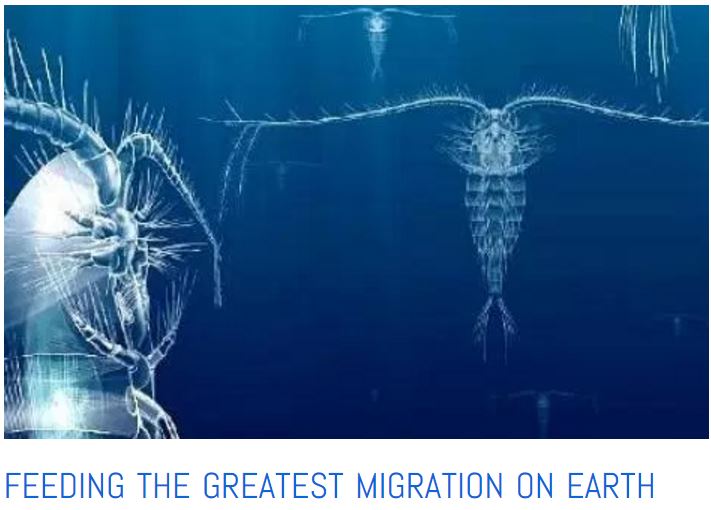
The greatest animal migration isn’t on the plains of Africa, it takes place every night where ocean pastures bloom. Click to read more.
“Most previous estimates of migration-related carbon flux have suggested that migration is only responsible for 5 to 20 percent of downward flux,” Stukel said.
“However, our study suggests that previous results may have underestimated the true importance of migration and that it may actually contribute almost half of the total flux in productive coastal regions.” – blooming ocean pastures
“Basic theory tells us that there should be relationships between particle size and both sinking speed and carbon content,” Stukel said.
“If we can measure the size and abundance of particles — and if these theoretical relationships hold — we can estimate particle flux by taking pictures of particles in the ocean.”
Professor Stukel and his grad students have worked to make a more cost-effective optical imaging method. They showed that conventional algorithms for measuring particle flux from sediment traps and image profiles performed particularly poorly in the California Current Ecosystem, and by inference in any ocean bloom where currents were present (almost all).
The primary issue Stukel found and is redressing has been argued about in ocean plankton science for decades. Measuring the accumulation of ‘marine snowfall’ mostly via sediment traps where there are currents is like measuring snowfall in a blizzard, most of the ‘snow’ is moving sideways, not settling straight down. Stukel has shown that one must account for the behaviour of heavier, fast-sinking zooplankton fecal pellets coming from non-uniform distributions zooplankton which are an important component of a region’s overall particle flux.
“Our results show that cameras need to quantify not only the size of the particle but also classify what type of particle it is,” Stukel said.
The three studies produced by Stukel and his team reveal new insights into the micro-scale mechanics of one of the world’s most important carbon transport processes. The best way to achieve a more comprehensive understanding of the biological carbon pump is to develop a deeper appreciation for the panoply of plankton that keep it pumping.
The power and potency of zooplankton doesn’t end with their ‘ends’ and the fecal pellet express. Their swimming lives are equally important.
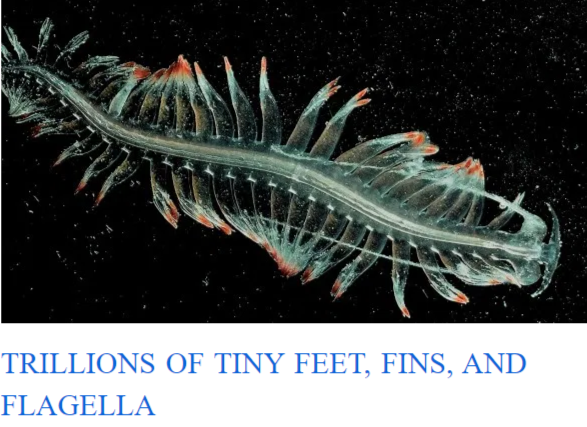
Think winds and tides are most important in creating motion in the oceans? Think again, vital ocean motion is made most of all by the collective action of trillions of tiny feet, fins, and flagella. Click to read more
It is vital to study the nature of the whole eco-system of ocean pastures and their zooplankton farmers. One cannot force this complex system into a simplified reductionist scientific model for the sake of brevity.
Everywhere on this blog you may read about how we are working to restore ocean pastures to historic levels of health and productivity. In doing so by helping the tiny zooplankton we can expect them to restore our climate.









